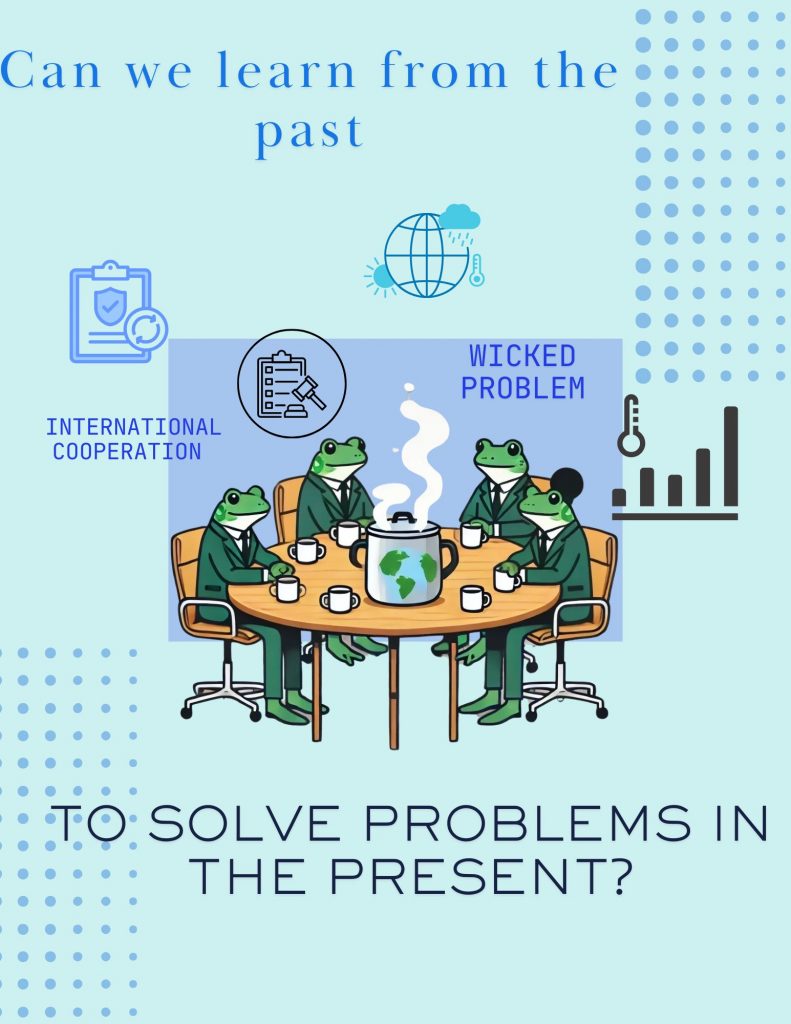
By Ashley Davis
On March 1, Dr. Amílcar Challú delivered a talk as part of the Great Decisions 2025 Series at the Wood County Committee on Aging. This annual event brings together community members and scholars to explore global issues. This year, Dr. Challú focused on climate change, unpacking how history, international cooperation, and local action all shape our response to this urgent crisis.
After his presentation, I had the chance to speak with Dr. Challú and learn more about the key takeaways.
Ashley Davis (A.D.): In your presentation, you used an illustration of frogs in suits sitting around a boiling pot. What’s the meaning behind that?
Amílcar Challú (A.C.): I generated that image using AI—it’s a twist on the common climate change metaphor. The idea is that as the temperature slowly rises, the frogs (representing world leaders) don’t notice until it’s too late. It also highlights the slow pace of international negotiations.
A.D.: You called climate change a “wicked problem.” What does that mean?
A.C.: A wicked problem has shifting rules, multiple possible solutions, and unpredictable outcomes. Climate change isn’t just an environmental issue—it’s tied to economics, politics, technology, and social organization. A solution that worked 20 years ago may no longer be effective today.
A.D.: Has history shown us successful environmental action?
A.C.: Yes! The ozone layer crisis in the 1980s is a great example. Scientists discovered that chlorofluorocarbons (CFCs) were depleting the ozone, allowing harmful UV radiation through. In response, world leaders signed the 1987 Montreal Protocol, successfully phasing out CFCs. Today, the ozone layer is recovering. This shows that international cooperation can work, but climate change is far more complex—there’s no single chemical to ban. Other examples include binational cooperation over the Great Lakes area as well. In general, well-defined problems are relatively more simple to deal.
A.D.: Your presentation emphasized local efforts. Why are they so important?
A.C.: While global policies are essential, local action drives meaningful change. In the 1980s and 1990s, despite federal environmental cutbacks, our community in Bowling Green preserved green spaces like Wintergarden Park. This was not an exception. Throughout these years the so-called Land Trust Movement mobilized private funds to save strategic pieces for conservation. Grassroots efforts like these can have lasting impacts, even when larger policies lag.
A.D.: How is today’s climate crisis different from past environmental shifts?
A.C.: The key difference is speed. Historically, temperature shifts happened over centuries, giving societies time to adapt. But since the Industrial Revolution, global temperatures have risen 2.5°F—four times faster than past climate changes. All indicators align to show that after 1950 we have been going through a “Great Accelleration” (as McNeil and Engers call it) in environmental change that is having leaving a deep footprint in our climate, biodiversity and is even leaving traces on the geological record. This rapid shift fuels social and economic instability, making urgent action necessary.
A.D.: Given the challenges, are you hopeful?
A.C.: I am. History shows societies adapt and overcome crises. The challenge is whether we can act quickly enough. The Montreal Protocol proves international cooperation is possible, and local initiatives show individuals can make a difference. The key is resilience—how we adapt, survive, and even thrive through change. Quite often we have a “doom and gloom” view of the environment, but I believe that history also shows us how we were able to overcome challenges. And that’s empowering.
